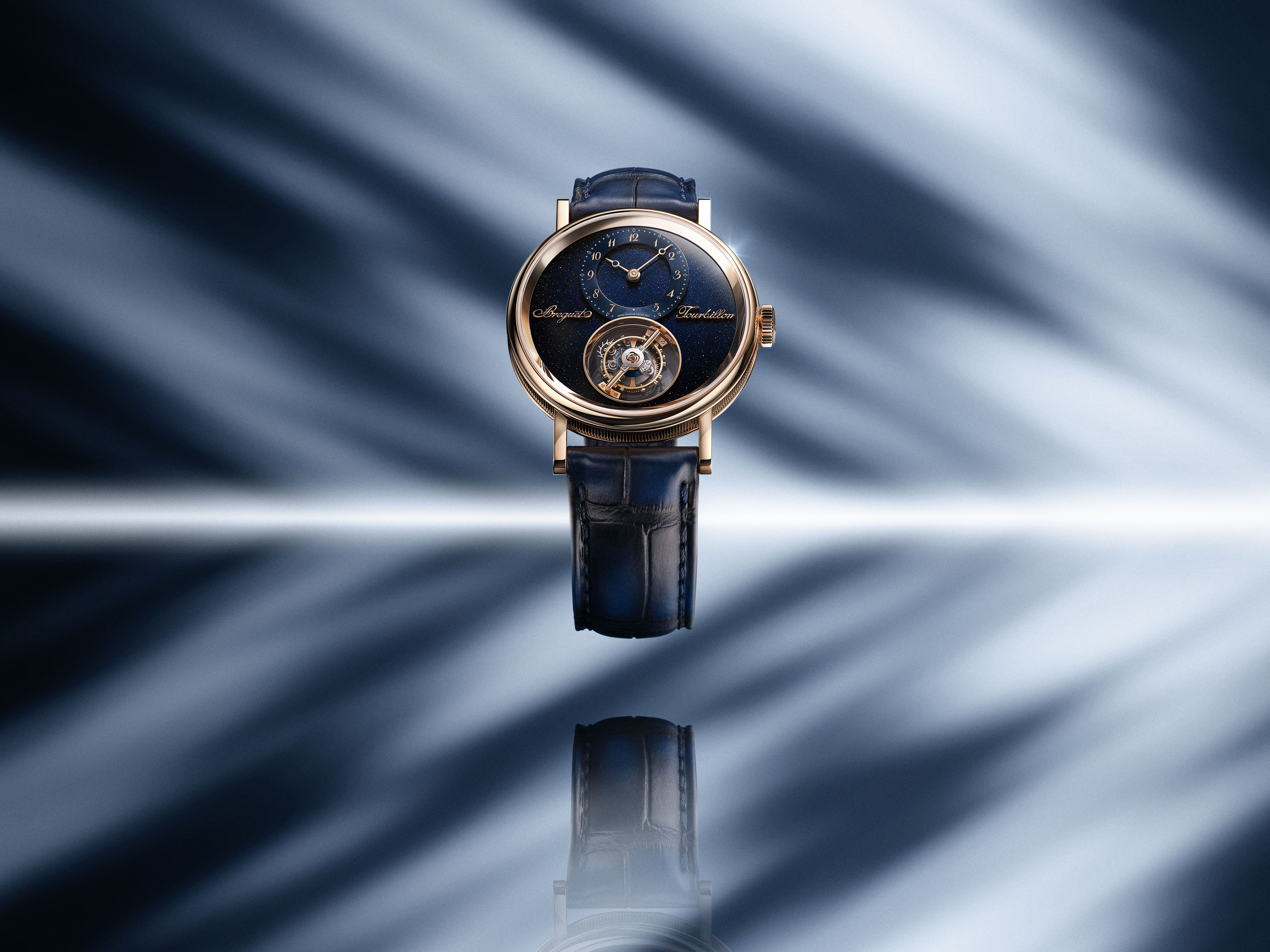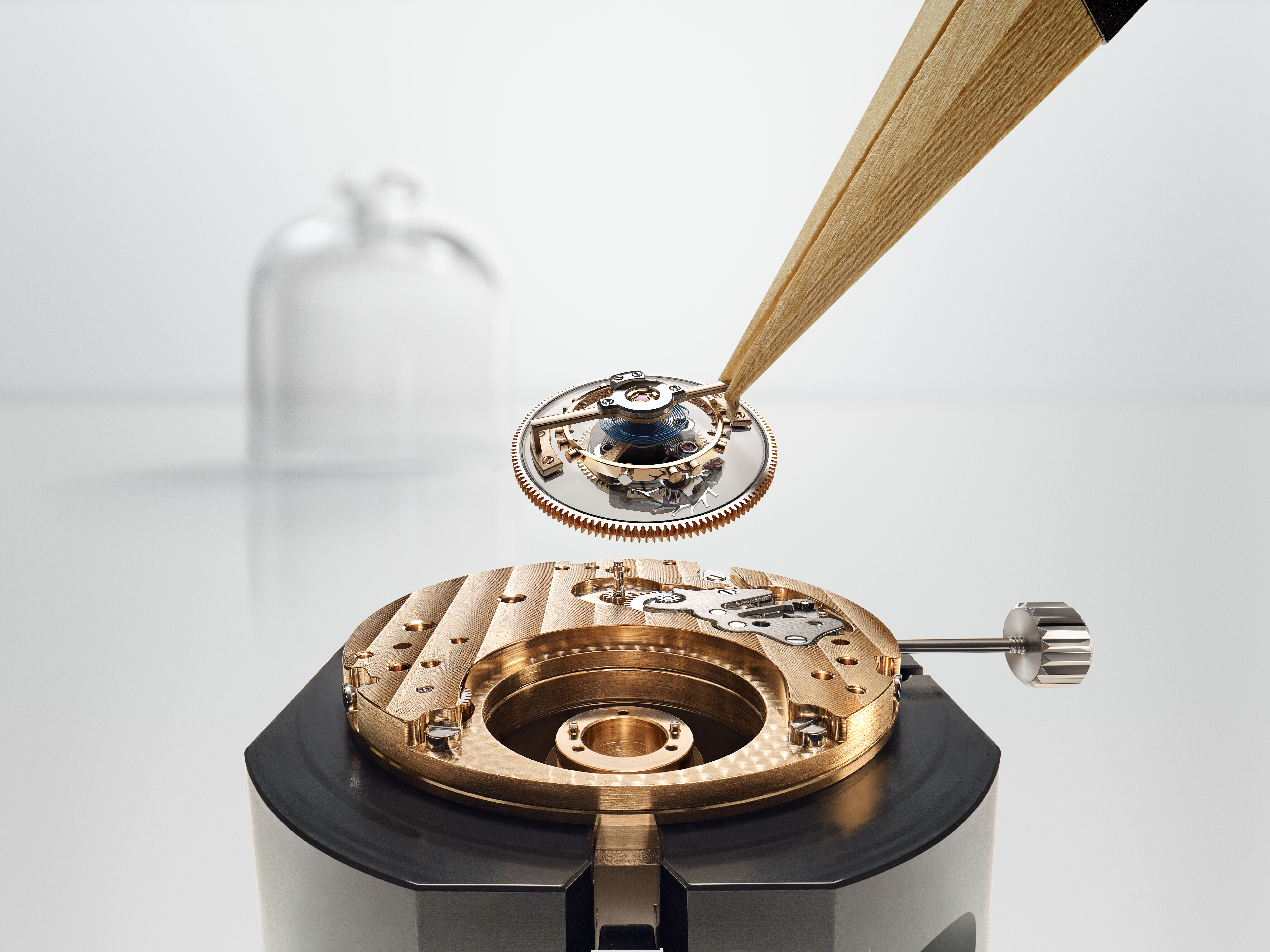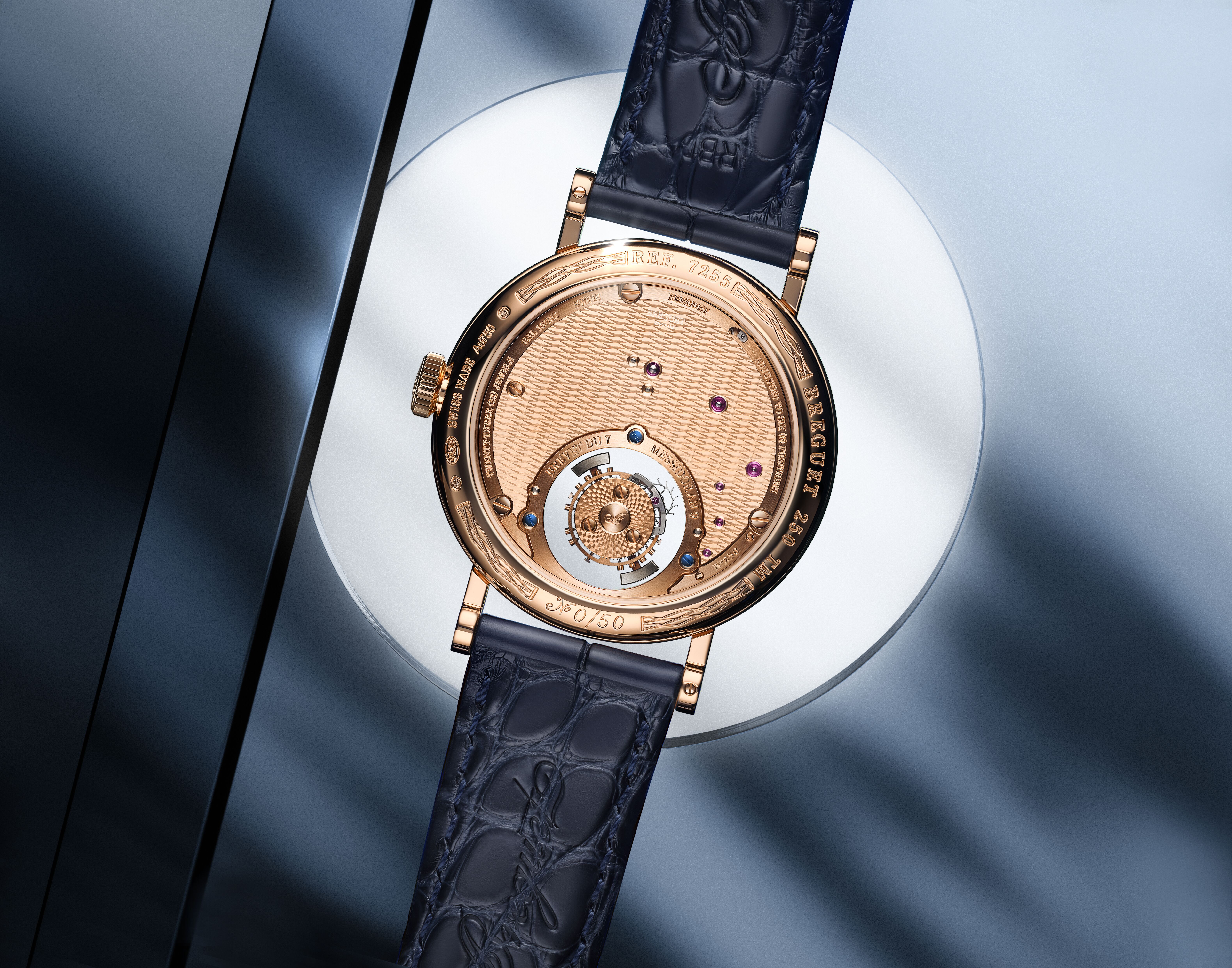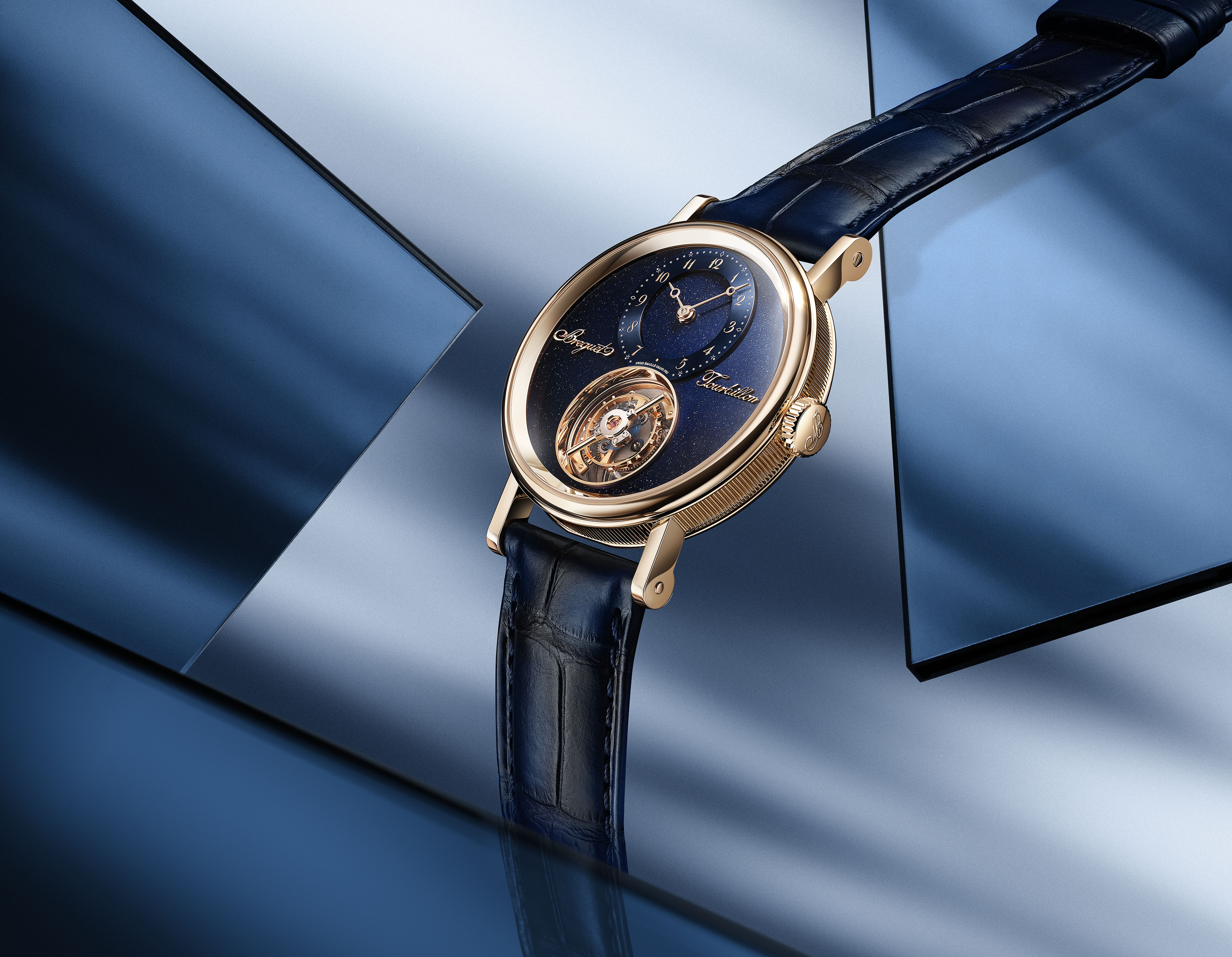The Breguet manufacture possesses a unique expertise in tourbillons, inherited since A.-L. Breguet obtained its patent on 7 Messidor Year 9 of the French Republican calendar – i.e., 26 June 1801. The House has never ceased to explore the infinite variations of this complication, but this is the first time it is presenting a “flying tourbillon” version. This interpretation also features a so called “mysterious” design, a construction that Breguet has mastered for many years.
Beyond honoring the master’s complication, this innovation also celebrates the very etymology of the word “tourbillon”. The choice of the term “Sidéral” is no accident: it evokes the world of stars, the precision of celestial movements, and the measurement of time by the heavens. It refers to astronomical time based not on the Sun but on the fixed positions of stars. It suggests a more rigorous, universe-oriented notion of time.
The flying tourbillon is a variant of the traditional tourbillon. Its purpose (to compensate for the effects of gravity on the balance wheel by rotating the cage that houses it) is therefore unchanged. However, it is a much later development: its first creations date back to the early 20th century. Unlike the traditional tourbillon, the flying tourbillon’s cage is supported only by its lower bridge, without an upper bar. It is thus held solely from below. Elevated above everything, one is captivated by its mesmerizing display.
Its design and construction are more complex, however, since the tourbillon cage is no longer supported by a pivot at the top, only at its base. This means it must be more solidly constructed, better balanced and more finely adjustable than a normal tourbillon. Back in 1801 A.-L. Breguet strove for robustness and precision, more than 200 years later the manufacture that bears his name is still pursuing these objectives.
Breguet has accentuated the suspended effect of its first flying tourbillon, by adding the mysterious complication. The mysterious complication consists of imparting a movement to an organ without it being visibly linked to the rest of the movement. It is often used for watch and clock hands, but any rotating organ can be involved, including the tourbillon, as seen on the Classique Tourbillon Sidéral 7255. The mysterious tourbillon is a striking complication which has been mastered by Breguet watchmakers. The lower bridge and the lower support of the tourbillon carriage, are, for this model, made of sapphire glass with an anti-reflective coating, rendering them invisible. The point of contact between the gears and the carriage is not visible; it is offset from the tourbillon cutout and therefore hidden from view by the dial.
The Classique 7255 thus incorporates both a mysterious and a flying tourbillon. This results from the combination of a regulator with an invisible drive that extends above the movement. Altogether, it creates a levitation effect and enhances visibility of the mechanism.
With the new Classique Tourbillon Sidéral 7255 Breguet has, for the first time in its history, chosen to create a dial with aventurine enamel. A tribute to astronomy and the observation of the starry sky, its deep blue is punctuated with sparkling inclusions, shining like the stars that adorn the celestial vault.
The art of aventurine dates back to the early 17th century and has been constantly perfected ever since. For this model, Breguet chose to work it like grand feu enamel. The glass must therefore be reduced to powder. The final compound must be finely calibrated – aventurine powder, for a perfect result, must have slightly larger grains than traditional enamel powder. At least five layers of aventurine are necessary to make this dial, each layer must be fired in a kiln at over 800 degrees Celsius. And each firing is highly sensitive and requires great precision: firing for too long, or at too high a temperature, can result in the dial being permanently compromised.
The dial of the Classique Tourbillon Sidéral 7255 combines the best of both worlds: the deep, solid blue of the enamelled glass, and the sparkling randomness of the copper particles that represent the stars. Given that each aventurine enamel dial is hand-crafted no two will ever be same, as such, all 50 examples of the Classique Tourbillon Sidéral 7255 are essentially unique pieces.
The Classique Tourbillon Sidéral 7255 is crafted in Breguet gold. This proprietary alloy was unveiled during the first chapter of the 250th anniversary celebrations. Its warm, subtly pink hue is inspired by the gold used by 18th century watchmakers, including Breguet. It is composed of 75% gold, enriched with silver, copper and palladium. Beyond its brilliance, it is distinguished by its resistance to discolouration and its stability over time.
For the first time, the recently unveiled Quai de l’Horloge guilloché is executed not only in a circular pattern on the case back and tourbillon support, but also in a linear fashion across the entire movement main plate. This guilloche motif’s design is inspired by the delicate curves of the river Seine as it flows around the Île de la Cité and the Île Saint-Louis.
On the dial side, each piece is adorned with the brand’s secret signatures, complementing the many other traditional Breguet design codes such as the finely fluted case middle, the straight lugs and the Breguet “hollowed apple” hands. On the back, each piece is individually numbered from 1/50 to 50/50.
With the Classique Tourbillon Sidéral 7255 wristwatch, Breguet unveils the fourth chapter of its 250th anniversary celebrations. The release date, the 26th of June 2025, is in homage to the 26th of June 1801 when Abraham-Louis Breguet obtained a patent for his invention of the iconic tourbillon. This exclusive watch has a limited production run of only 50 timepieces.
Discover Breguet timepieces at Sincere Fine Watches boutiques in Takashimaya S.C. and Suntec City, Singapore, and Pavilion Kuala Lumpur.








